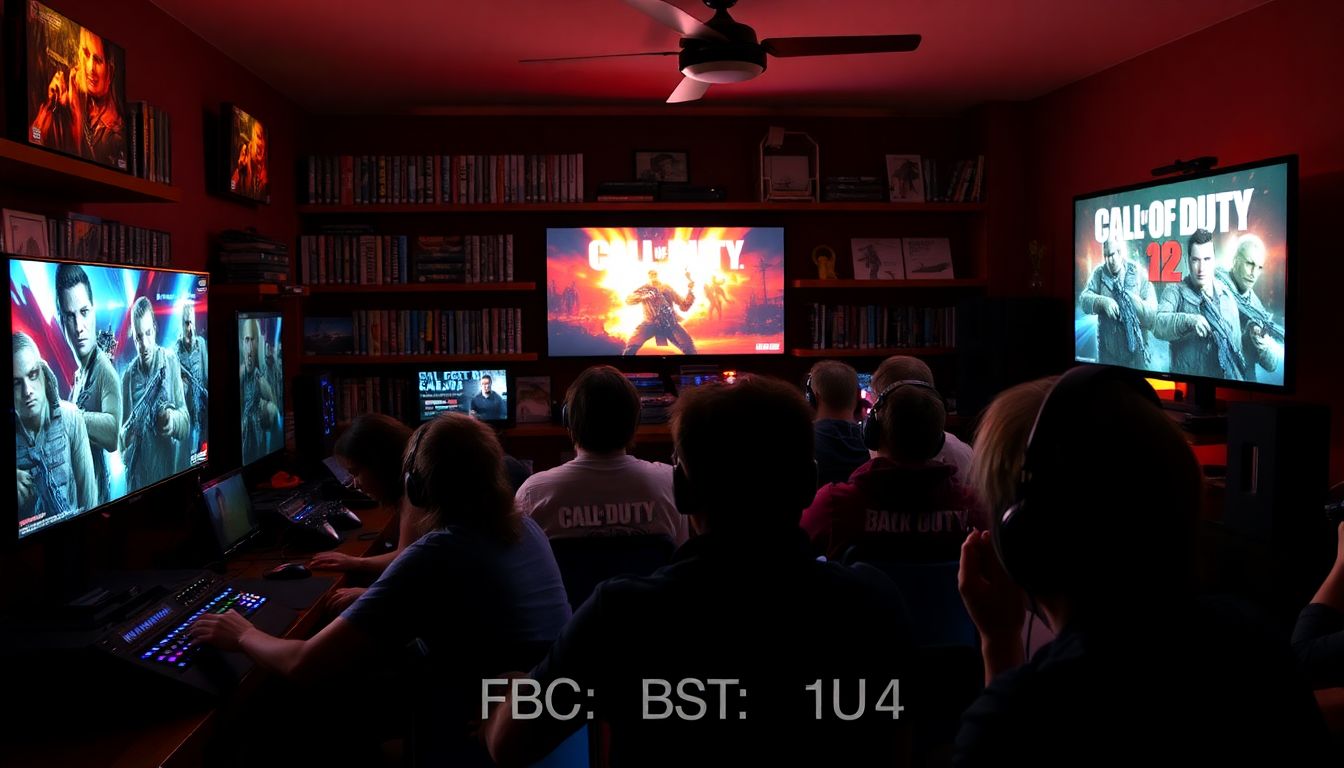More People Are Playing Back 4 Blood And Call Of Duty 2 Right Now Than FBC: Firebreak

Introduction: A Shift in Popularity Among Classic and Modern Shooters
The gaming world is buzzing with new numbers—more players are turning to Back 4 Blood and Call of Duty 2 than ever before. Meanwhile, FBC: Firebreak is seeing fewer players than recent months. This shift shows how gamers’ tastes change over time. It also reflects new trends in multiplayer gaming. As players seek different experiences, titles rise and fall in popularity quickly. Understanding this pattern can help both gamers and developers stay ahead of the curve.
The Resurgence of Back 4 Blood in the Multiplayer Scene
Popularity Metrics and Player Engagement
Right now, Back 4 Blood is experiencing a boost in active players. Popular gaming sites report a steady climb in weekly players, surpassing initial launch numbers. Its current stats rival other popular co-op shooters like Left 4 Dead and World War Z. The multiplayer scene is alive again, thanks to new updates and community interest.
What Drives Back 4 Blood’s Popularity?
What makes Back 4 Blood so appealing today? It sticks to simple shooter mechanics combined with a strong co-op focus. The game feels familiar yet fresh enough to attract old fans of zombie shooters. Plus, Turtle Rock Studios' reputation helps; most players trust their work. Player feedback on gameplay improvements, new maps, and challenges continues to shape its popularity.
Community and Competitive Scene
The game’s community is active with tournaments and streaming events. Streamers share their gameplay, bringing new watchers into the fold. These public challenges keep players coming back and help attract new ones. As a result, Back 4 Blood isn’t just a game you play—it’s a social event.
Call of Duty 2: The Timeless Appeal of a Classic
Persistent Player Base and Modern Relevance
Despite being over a decade old, Call of Duty 2 still draws a loyal crowd. Statistics from gaming analytics reveal consistent daily and monthly player numbers. Its simple, fast-paced gameplay remains relevant in today’s competitive FPS scene. Many gamers, new and veteran, see Call of Duty 2 as a go-to game for quick matches.
Nostalgia and Newer Generations
Why do players keep coming back to Call of Duty 2? Nostalgia plays a big role. Many older players remember it from their early gaming days. At the same time, younger players discover it through remastered versions or modding. These options keep the game fresh, hiding its age behind new features and tweaks.
Influences on Modern Call of Duty Titles
Call of Duty 2 helped shape the whole franchise. Its design elements, like fast movement and team strategy, still influence the latest games. Experts agree that the game’s core mechanics created a template that modern developers follow. The franchise’s ability to stay relevant depends on its roots—this classic still helps guide the series.
FBC: Firebreak’s Declining Player Count and Challenges
Player Engagement Decline
Compared to Back 4 Blood and Call of Duty 2, FBC: Firebreak sees fewer players. Official stats show a noticeable drop in activity. Some players report gameplay issues, bugs, or boredom as reasons for leaving. Market competition is fierce, and Firebreak just isn’t meeting players’ needs anymore.
Market Competition and Consumer Preference
In multiplayer shooter trends, titles that focus on coop or nostalgia tend to perform better. Games like Back 4 Blood attract players with survival elements, while Call of Duty 2 appeals to those who love classic FPS fun. Firebreak struggles because it misses some of these popular features. Players now prefer games that are more polished or offer more social interaction.
Developer and Community Response
The developers have tried to revive Firebreak with updates and patches. Still, the community feels progress is slow. Many gamers express frustration online, which impacts the game’s staying power. Without strong support, the game risks fading into obscurity—an all-too-common story for declining multiplayer titles.
Analyzing the Market Trends: What Do These Shifts Reveal?
Player Preferences for Style and Gameplay
Today’s gamers lean towards cooperative challenges or fast-paced competition. Titles that blend these styles, like Back 4 Blood and Call of Duty 2, top the charts. Nostalgic titles still appeal, but only when they stay relevant and fun. Gaming choices now hinge on fresh updates, social features, and accessibility.
Impact of Marketing and Updates
Years of updates and good promotion help keep games alive. When developers regularly add new content or events, players stay interested longer. Community engagement also plays a role—more interaction means more loyalty. Games that ignore this tend to lose players fast.
Industry Experts’ Perspectives
Game analysts say that the current shift shows a preference for proven formulas and community-driven content. The trend seems to favor titles with simple mechanics, strong communities, and regular support. Predictions point to continued growth for classic hits and well-supported new releases.
Actionable Tips for Gaming Enthusiasts and Developers
For Players
- Focus on popular titles like Back 4 Blood and Call of Duty 2 for fun multiplayer experiences.
- Join gaming communities for tips, updates, and social play.
- Look for games with active support to keep your gaming fresh and exciting.
For Developers
- Boost engagement by listening to community feedback.
- Regularly release updates, new maps, or challenges.
- Find ways to combine nostalgia with new features to attract different player groups.
Conclusion: The Dynamic Landscape of Multiplayer Gaming Dominance
The current scene shows Back 4 Blood and Call of Duty 2 leading the pack, leaving FBC: Firebreak behind. As players’ tastes evolve, so must games. Titles that stay fresh, community-focused, and adaptable stand the best chance at lasting success. Both gamers and developers should stay alert to these trends and adjust accordingly. The future of multiplayer gaming depends on innovation and listening to what players truly want.
Stay tuned, gamers. Keep exploring new titles and support your favorite developers. The game world is changing fast, and those who adapt will thrive.
